
Concept explainers
(a)
Interpretation:
The isomer of given compound needs to be drawn.

Concept introduction:
Isomers can be defined as the organic molecules which have the same molecular formula and different structural formula.
Due to different structural formula, isomers have different physical and chemical properties.
Answer to Problem 7E
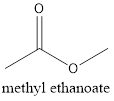
Explanation of Solution
The formula of the given compound is CH3CH2COOH (propanoic acid). Propanoic acid is a
The structure is represented as follows:
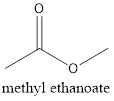
(b)
Interpretation:
The isomer of a given compound needs to be determined.
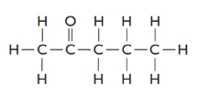
Concept introduction:
Isomers can be defined as the organic molecules which have the same molecular formula and different structural formula.
Due to different structural formula, isomers have different physical and chemical properties.
Answer to Problem 7E

Explanation of Solution
The given structure is as follows:
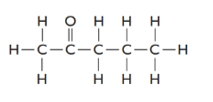
There are 5 carbon atoms thus, it is 2-pentanone.
2-pentanone is an isomer of pentanal as it also contains 5 carbon atoms, 1 O atom and 10 H atoms.
The structure of pentanal is represented as follows:

(c)
Interpretation:
The isomer of a given compound needs to be determined.
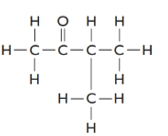
Concept introduction:
Isomers can be defined as the organic molecules which have the same molecular formula and different structural formula.
Due to different structural formula, isomers have different physical and chemical properties.
Answer to Problem 7E

Explanation of Solution
The given structure is as follows:
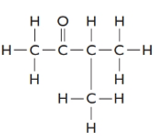
The formula of the given compound is
3-methylbutanone must be an isomer of pentanal as both have the same molecular formula but different structural formulas.
The structure of pentanal is as follows:

(d)
Interpretation:
The isomer of a given compound needs to be determined.

Concept introduction:
Isomers can be defined as the organic molecules which have the same molecular formula and different structural formula.
Due to different structural formula, isomers have different physical and chemical properties.
Answer to Problem 7E
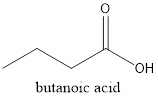
Explanation of Solution
The given structure is as follows:

The formula of the given compound is
Methylpropanoate is an ester as RCOOR is the general formula. Esters are isomers of carboxylic acid therefore it must be carboxylic acid with 4 C atoms that is butanoic acid.
The structure is represented as follows:
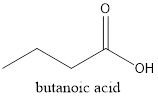
(e)
Interpretation:
The isomer of a given compound needs to be determined.

Concept introduction:
Isomers can be defined as the organic molecules which have the same molecular formula and different structural formula.
Due to different structural formula, isomers have different physical and chemical properties.
Answer to Problem 7E

Explanation of Solution
The given structure is as follows:

The formula of the given compound is

(f)
Interpretation:
The isomer of given compound needs to be determined.
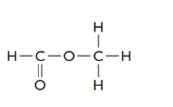
Concept introduction:
Isomers can be defined as the organic molecules which have the same molecular formula and different structural formula.
Due to different structural formula, isomers have different physical and chemical properties.
Answer to Problem 7E

Explanation of Solution
The given structure is as follows:
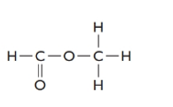
The formula of the given compound is

Chapter U2 Solutions
Living By Chemistry: First Edition Textbook
Additional Science Textbook Solutions
Brock Biology of Microorganisms (15th Edition)
Organic Chemistry (8th Edition)
Biology: Life on Earth with Physiology (11th Edition)
Genetic Analysis: An Integrated Approach (3rd Edition)
Applications and Investigations in Earth Science (9th Edition)
Campbell Biology (11th Edition)
- (a) 21.8 Name the following compounds. & (b) Br (e) O₂N. (h) H (c) Br (d) NH2 ☑N Br H ہیں Ph (g) OMe бл .0-0.e 21.9 Draw a structural formula for each compound. (a) 2,3-Dinitrotoluene (c) Diphenylmethanol (e) p-Nitroaniline (b) 3-Propylanisole (d) m-Propylphenol (f) Pentabromobenzenearrow_forwardIs this the major product of this reaction?arrow_forwardPlease helparrow_forward
- Draw a mechanism for the following synthetic transformation including reagents and any isolable intermediates throughout the process. Please clearly indicate bond cleavage/formation using curly arrows. MeO2Carrow_forwardCHEM 310 Quiz 8 Organic Chemistry II Due: Tuesday, April 25th, at 11:59 pm. This quiz is open textbook / open notes - but you must work alone. You cannot use the internet or the solutions manual for the book. Scan in your work and record an explanation of your mechanism. You may record this any way that you like. One way would be to start an individual Zoom meeting, start recording, "share your screen" and then talk through the problem. This will be converted to an .mp4 file that you can upload into Canvas using the "record/upload media" feature. Pyridine, benzoic acid and benzene are dissolved in ethyl acetate. Design and provide a plan / flow chart for separating and isolating each of these components. Pyridine and benzene are liquids at room temperature. Benzoic acid is a solid. You have ethyl acetate, 2M NaOH, 2M HCI and anhydrous MgSO4 available, as well as all the glassware and equipment that you used in the organic lab this year. Provide accurate acid/base reactions for any…arrow_forwardCan anyone help me solve this step by step. Thank you in advaarrow_forward
 ChemistryChemistryISBN:9781305957404Author:Steven S. Zumdahl, Susan A. Zumdahl, Donald J. DeCostePublisher:Cengage Learning
ChemistryChemistryISBN:9781305957404Author:Steven S. Zumdahl, Susan A. Zumdahl, Donald J. DeCostePublisher:Cengage Learning ChemistryChemistryISBN:9781259911156Author:Raymond Chang Dr., Jason Overby ProfessorPublisher:McGraw-Hill Education
ChemistryChemistryISBN:9781259911156Author:Raymond Chang Dr., Jason Overby ProfessorPublisher:McGraw-Hill Education Principles of Instrumental AnalysisChemistryISBN:9781305577213Author:Douglas A. Skoog, F. James Holler, Stanley R. CrouchPublisher:Cengage Learning
Principles of Instrumental AnalysisChemistryISBN:9781305577213Author:Douglas A. Skoog, F. James Holler, Stanley R. CrouchPublisher:Cengage Learning Organic ChemistryChemistryISBN:9780078021558Author:Janice Gorzynski Smith Dr.Publisher:McGraw-Hill Education
Organic ChemistryChemistryISBN:9780078021558Author:Janice Gorzynski Smith Dr.Publisher:McGraw-Hill Education Chemistry: Principles and ReactionsChemistryISBN:9781305079373Author:William L. Masterton, Cecile N. HurleyPublisher:Cengage Learning
Chemistry: Principles and ReactionsChemistryISBN:9781305079373Author:William L. Masterton, Cecile N. HurleyPublisher:Cengage Learning Elementary Principles of Chemical Processes, Bind...ChemistryISBN:9781118431221Author:Richard M. Felder, Ronald W. Rousseau, Lisa G. BullardPublisher:WILEY
Elementary Principles of Chemical Processes, Bind...ChemistryISBN:9781118431221Author:Richard M. Felder, Ronald W. Rousseau, Lisa G. BullardPublisher:WILEY





